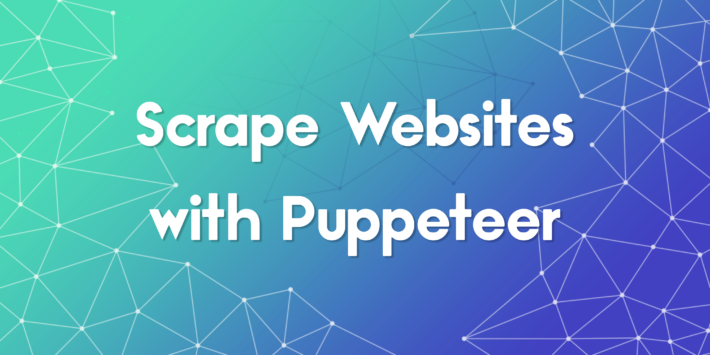Web Scraping with PHP: A Comprehensive Guide using ProxyTee

PHP, a widely used scripting language in web development, offers a solid foundation for building efficient web scraping with PHP workflows. While the process can sometimes be complex, various open-source libraries and tools make it significantly more manageable. One such powerful ally is ProxyTee, which enhances web scraping capabilities by providing high-quality proxy solutions. In this guide, we’ll explore how to leverage PHP for extracting data from static and dynamic web pages while utilizing ProxyTee to optimize the process.
Can PHP be Used for Web Scraping?
Absolutely! Web scraping with PHP is a viable and practical option, particularly for structured and semi-structured data extraction. Although Python and JavaScript often dominate the web scraping landscape, PHP remains a reliable and accessible choice for many developers. With its mature ecosystem, extensive community support, and ease of use, PHP is particularly well-suited for straightforward scraping tasks.
Moreover, web scraping with PHP becomes even more powerful when integrated with tools like Goutte, Guzzle, and Symfony Panther, enabling robust solutions that handle everything from simple static page scraping to more complex JavaScript-rendered content extraction.
Why Use ProxyTee for Web Scraping?
When it comes to web scraping with php, having reliable and fast proxies is crucial to success. Here’s why ProxyTee stands out:
- Unlimited Bandwidth: ProxyTee offers unlimited bandwidth, ensuring your web scraping projects never get cut off due to data usage. Scrape as much data as you need without incurring additional costs. This feature is a big plus, especially when dealing with large websites or high volumes of data.
- Global IP Coverage: With over 20 million IPs in more than 100 countries, ProxyTee provides extensive geographic coverage, enabling you to scrape data from any location. Target specific regions with ease, avoiding geographical restrictions and ensuring you have comprehensive access to your required data.
- Rotating Residential Proxies: ProxyTee’s residential proxies ensure that your web scraping activities blend in as legitimate traffic, reducing the chance of being detected and blocked.
- Affordability: ProxyTee’s cost-effective solutions provide you with powerful tools at competitive prices. You don’t need to pay premium rates to get reliable and efficient proxy services. It’s one of the cheapest yet reliable choices in the market.
Setting Up Your PHP Environment
To start web scraping with PHP, make sure you have both PHP and Composer installed. Use the following links to guide you:
- For Windows, download PHP from PHP’s official website. Alternatively, use Chocolatey package manager by running
choco install php. - For macOS, PHP might already be bundled, or use Homebrew with the command
brew install php.
Once PHP is installed, ensure you have version 7.1 or higher. Check it with the terminal using php --version. Next, install Composer, the PHP dependency manager, which is downloadable from its official website. Use the following terminal command for easy installation: brew install composer (macOS), or choco install composer (Windows)
Verify the installation with composer --version.
Web Scraping with Goutte
Goutte is a powerful PHP library ideal for handling most static websites. It works as a wrapper around Symfony’s components, making it user-friendly and accessible. Begin by setting up a directory for your code, then use composer:
composer init --no-interaction --require="php >=7.1"
composer require fabpot/goutte
composer update
Now you’re set up to create a Goutte client, send HTTP requests, and select HTML elements. You can use CSS selectors to filter through the content. For example, to extract book titles and prices from a bookstore site (like books.toscrape.com), you can apply filters such as .product_pod, .image_container img (for the title) and .price_color (for price). Combine this with loops to extract multiple elements from one page or multiple pages if necessary.
For instance, here’s a snippet illustrating this approach:
<?php
require 'vendor/autoload.php';
use Goutte\Client;
$client = new Client();
$url = "https://books.toscrape.com/";
$crawler = $client->request('GET', $url);
echo $crawler->filter('title')->text() . "\n"; // Extract the title
$crawler->filter('.product_pod')->each(function ($node) {
$title = $node->filter('.image_container img')->attr('alt');
$price = $node->filter('.price_color')->text();
echo "Title: " . $title . " - Price: " . $price . "\n";
});
Handling Pagination
In most web scraping scenarios, you need to extract data from more than a single page. Use CSS selectors to locate the “Next” button on the website you’re scraping. From there, use loops to iterate over multiple pages by following the pagination pattern.
For example, to scrape a paginated series of books on the book store site mentioned earlier:
function scrapePage($url, $client)
{
$crawler = $client->request('GET', $url);
$crawler->filter('.product_pod')->each(function ($node) {
$title = $node->filter('.image_container img')->attr('alt');
$price = $node->filter('.price_color')->text();
echo "Title: " . $title . " - Price: " . $price . "\n";
});
try {
$nextPage = $crawler->filter('.next > a')->attr('href');
return "https://books.toscrape.com/catalogue/" . $nextPage;
} catch (InvalidArgumentException $e) {
return null;
}
}
$client = new Client();
$nextUrl = "https://books.toscrape.com/catalogue/page-1.html";
while ($nextUrl) {
$nextUrl = scrapePage($nextUrl, $client);
}
Web Scraping with Guzzle and XPath
Guzzle is another PHP HTTP client for web scraping. This library facilitates interaction with web pages to obtain responses, and it will work together with XML and XPath concepts, to navigate within web pages and select elements. Here are basic setup commands:
composer init --no-interaction --require="php >=7.1"
composer require guzzlehttp/guzzle
composer require symfony/dom-crawler
From there you can create Guzzle clients and send HTTP requests. The DOMCrawler class is responsible for creating a tree and navigating through the elements using filterXpath function:
<?php
require 'vendor/autoload.php';
use GuzzleHttp\Client;
use Symfony\Component\DomCrawler\Crawler;
$client = new Client();
$response = $client->request('GET', 'https://books.toscrape.com');
$html = $response->getBody()->getContents();
$crawler = new Crawler($html);
$crawler->filterXpath('//*[@class="product_pod"]')->each(function ($node) {
$title = $node->filterXpath('.//*[@class="image_container"]/a/img/@alt')->text();
$price = $node->filterXPath('.//*[@class="price_color"]/text()')->text();
echo "Title: " . $title . " - Price: " . $price . "\n";
});
Web Scraping with Symfony Panther
Dynamic websites rely on JavaScript, which presents issues when trying to web scrape with traditional methods, such as Goutte. Symfony Panther tackles this problem by leveraging actual browsers (Chrome or Firefox) to load the page’s contents. For installation, run:
composer init --no-interaction --require="php >=7.1"
composer require symfony/panther
composer update
Panther uses a Client to make HTTP requests, similarly to Goutte and Guzzle, but the usage of waitFor() allows you to wait until a specific element is rendered by the browser, prior to attempting selection via filter function. Then you can simply scrape as if it was Goutte. This approach is necessary when trying to retrieve data from dynamic pages.
<?php
require 'vendor/autoload.php';
use Symfony\Component\Panther\Client;
$client = Client::createChromeClient();
$client->get('https://quotes.toscrape.com/js/');
$crawler = $client->waitFor('.quote');
$crawler->filter('.quote')->each(function ($node) {
$author = $node->filter('.author')->text();
$quote = $node->filter('.text')->text();
echo "Author: " . $author . " - Quote: " . $quote . "\n";
});
while(true) {
try {
$client->clickLink('Next');
} catch (Exception $e) {
break;
}
}
Web Scraping with ProxyTee
With the help of ProxyTee‘s residential rotating proxies, web scraping becomes smoother and more efficient. Using PHP libraries like Goutte, Guzzle and Symfony/Panther to extract data can cover from static pages, to very dynamic content by relying on headless browsers. And you also can handle a variety of web scraping tasks with the combination of PHP and a reliable proxy service. Also you can consider using PHP for building your custom plugins to enhance functionality of existing platforms, such as WordPress or other platforms that uses PHP as base technology.
If you are looking for more options in terms of residential and datacenter proxies, consider exploring other offerings of ProxyTee, such as static residential proxies or datacenter proxies. With multiple protocols supported by ProxyTee, you are free to select one for your particular use case. Don’t hesitate to also check other features including Auto Rotation, Simple API, or User-Friendly interface provided by ProxyTee, along with various use cases.
Start using ProxyTee today and elevate your web scraping with PHP to a whole new level.


